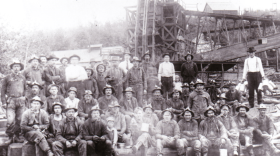Michigan Radio's ongoing MI Curious series gives listeners a chance to ask a question. Then, we do our best to get an answer.
The next question comes from Daniel Moerman from Superior Township, near Ann Arbor. He won our last voting round.
"How is it possible any mining could take place in the Porcupine Mountains? It’s supposed to be a wilderness area."
The Porcupine Mountains Wilderness State Park is a 59,000-acre area in the Upper Peninsula. It’s on the west side of the U.P. taking up area between the Wisconsin border and Lake Superior.
Nick Schroeck, the director of the Transnational Environmental Law Clinic at the Wayne State University Law School, joined Stateside to answer Daniel's question.
How is it possible to mine in the Porcupine Mountains Wilderness State Park? The key terms in this situation are surface rights and mineral rights.
"It's possible but it will be difficult," Schroeck said. "In Michigan, surface rights, the rights to use the surface land, like in the Porcupine Mountains Wilderness State Park, and subsurface rights, or mineral rights. In Michigan, you can sever surface rights from subsurface rights."
In 1948, three years after the park was created, the state purchased additional land. According to Schroeck, the state was only able to acquire the surface rights to the land.
Recently, a company called Highland Copper was given permission to resume exploratory drilling to determine if they could mine for copper.
Schroeck said even if the company found a sufficient amount of copper to make mining worthwhile, it would not be able to just dig a big hole and mine for copper right there. That would require the surface rights. As the company only has mineral rights, Schroeck said it would have to dig that big hole outside the park and tunnel its way into the area where the copper is located.
For the full answer to this question, listen above.
Click here to help us decide which question to answer next!
(Subscribe to the Stateside podcast on iTunes, Google Play, or with this RSS link)





